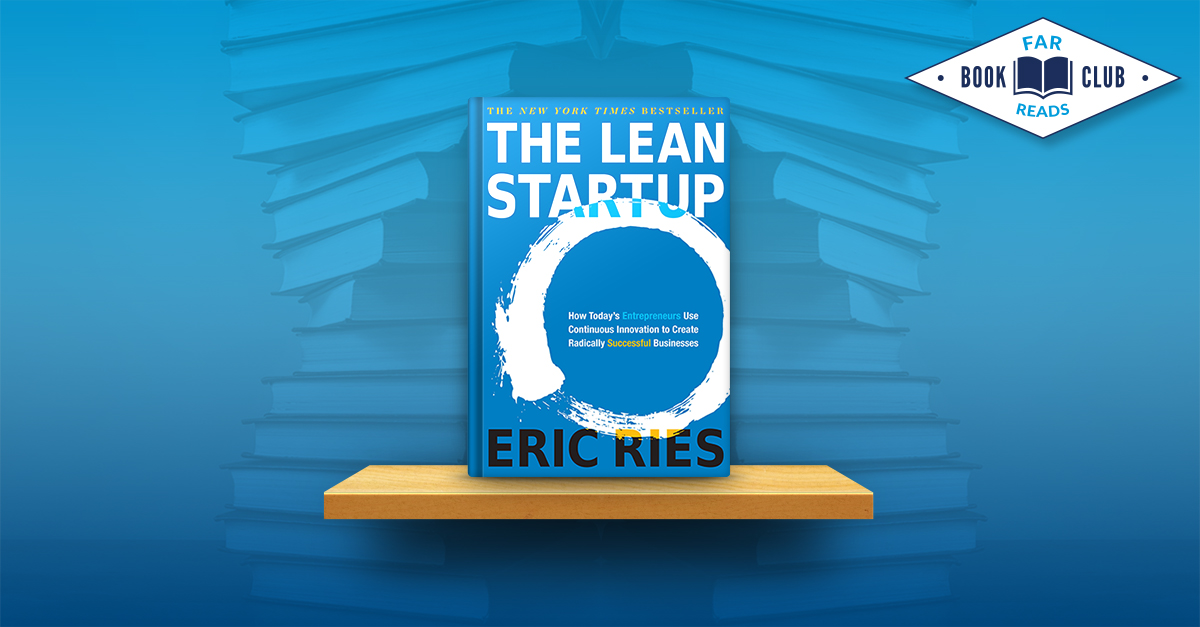
This month’s Far Reads book club pick was “The Lean Startup” Eric Ries. Here’s our recap.
Who Selected It
Chris Rouw
Why He Selected It
“Our team works on a lot of software products—we build others’ startup ideas, our own startup companies, and other companies’ products. I feel we should learn as much about startups as possible to help both our clients and our own projects. People in the startup world often reference ‘The Lean Startup.’ I thought it was time to see what everyone was talking about.”
What It’s About
Entrepreneurship isn’t for the faint of heart. It’s filled with extreme uncertainty. Which is why it’s so exciting…and so risky.
Author Eric Ries should know. He’s been there. As a serial entrepreneur, he’s experienced the highest of highs and the lowest of lows.
It’s the insights he gained from these experiences that led him to adopt a radical approach—The Lean Startup Method.
The Lean Startup Method is characterized by:
- An extremely fast cycle time
- A focus on what customers actually want instead of what you think they want
- A scientific approach to decision-making
It helps entrepreneurs increase their odds of building a successful startup, Ries says, and it can work in any company, of any size, in any industry.
He explains how to apply the Lean Startup Method and gives examples of how companies are successfully using lean thinking in the process of innovation.
Our Favorite Quote
“We do everything wrong: we build a minimum viable product, an early product that is terrible, full of bugs, and crash-your-computer-yes-really stability problems. Then we ship it to customers way before it’s ready. And we charge money for it. After securing initial customers, we change the product constantly—much too fast by traditional standards—shipping new versions of our product dozens of times every single day…Traditional business thinking says that this approach shouldn’t work, but it does…”
How We’re Applying What We Learned
In the book, Mark Cook of Kodak Gallery’s VP of products explains, “Traditionally, the product manager says, ‘I just want this.’ In response, the engineer says, ‘I’m going to build it.’
Instead, Cook tries to push his team to first answer four questions:
- Do consumers recognize that they have the problem you are trying to solve?
- If there were a solution, would they buy it?
- Would they buy it from us?
- Can we build a solution for that problem?
We realized if we really have our clients’ best interests in mind and want to set them up for success, we must insist they have answers to those questions before we develop their products.
However, we don’t expect them to go it alone. To assist them with the process, we’re offering clients two new services:
- Business model canvas
- Value proposition design
The book also reminded us that we should never make assumptions about our audience, and we’ve made a conscious effort to build time and budget into projects for validated learning
.